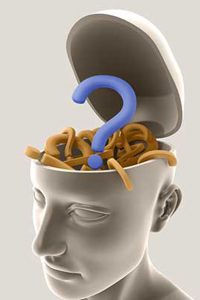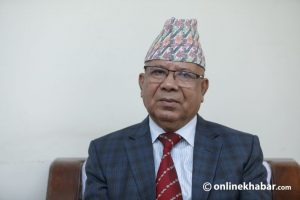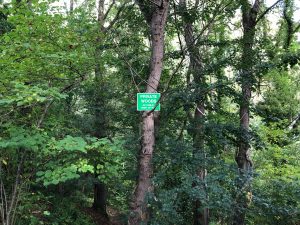
Once my car broke down and I had to visit an auto-repair shop. As the mechanic worked under the open bonnet twiddling around with the maze of wires and conduits, my attention was drawn to a small black box.
Just to satisfy my curiosity, I asked the mechanic what it was. “That’s the brain of the car, called the ECU (engine control unit); it controls the entire mechanism of the car,” he explained.
An enigma
So does the human brain. The ‘1.4 kg mass of gray and white matter’, that is our brain, is an organ that controls the vital functions of our body. It is the brain that enables us to think, breathe and move. ‘It is sometimes referred to as a muscle of thinking as the ‘brain’ actually tells your muscles what to do’.
“People have long envisaged the brain as being like a computer on standby, lying dormant until called upon to do a task as remote as solving a Sudoku” writes Douglas Fox for the online magazine, New Scientist.
In point of fact, the human brain is nothing short of an enigma, a real ‘brain-teaser’. To understand it, it’s like watching the sci-fi movie Harry Potter series without having read the books; if not, more complex.
The human brain traverses through several phases, right from its birth, through childhood, adolescence, adulthood, and to ripe old age–a life cycle no less dramatic than Shakespeare’s Hamlet.
Composed of a hundred billion neurons, they live to some 120 years of a person’s lifetime. Mind boggling! “Neurons don’t die en masse as we age.” And this phenomenon has mystified scientists for ages and will continue to do so in the future.
Cognitive change
The brain in its life cycle is at all times subjected to cognitive changes with the coming of age. The journey is riddled with all kinds of challenges; some, by nature, are hostile.
With maturity, the brain’s neural circuits slow down and affect the normal functioning of the human body.
What is amazing is that it is ‘programmed’ to take on all these kinds of situations and challenges and performs nothing short of ‘biological miracles’.
 Everyone ages. That’s gospel. Apart from slowing down, when the brain ages, it tends to get more vulnerable and can fall prey to diseases and injuries, some crippling.
Everyone ages. That’s gospel. Apart from slowing down, when the brain ages, it tends to get more vulnerable and can fall prey to diseases and injuries, some crippling.
This is the stage when we have to steer our lives towards a more prescribed lifestyle and regimen. The advances made by science have uncovered new facts about renewing the neural circuits that command the functioning of the brain.
Their findings have proven that the brain, even as it ages, has the capacity to renew itself, in the absence of which the neurons become defenseless and prone to diseases or injuries.
Resilience is another virtue, the brain boasts of. Dr Edward Taub, a neuroscientist from the University of Alabama at Birmingham, and his team of colleagues came up with an innovative therapy. Their avant-garde therapy helped revive the stricken part of the brain of an aged stroke patient surviving with paralysis of the left side of his body.
Miracles
Written off as useless, the left arm of the patient made remarkable recovery. Dr Taub’s therapy helped renew and replace the diseased, killed or injured neurons by the millions.
The respective neurons were found to have been assisted by the neighboring neural circuits responsible for the moving parts unaffected by the paralysis.
It was a miracle, almost like in a ghost story–someone rising from his grave–a revenant. The half-shrunk brain was miraculously able to grow back to its original size.
Some scientists have also referred the human brain involved in producing movements and receiving sensations to a ‘plastic instrument’, supple and pliable pro re nata.
Neuroscientists claim no matter how old the person, or aged the brain, is, the plasticity continues to remain. In other words, it can be said that “the brain is like a muscle—the more you exercise it, the better it gets and performs.”
It goes without saying that the mind starts failing with age. A phenomenon such as memory lapses begins to attack the brain. In a study lab at the University of Michigan, Director Professor Denise Park, a psychologist, presented a new approach to brain aging.
According to her, the human brain begins aging as early as at 20, and by 30, it starts slowing down and continues to do so into maturity.
In this process, the mind can hold less and less information and consciousness, and the changes in the mental functioning continue to decline and tend to ‘aggregate’. Surprisingly, the affected person comes to notice this decline in the cognitive ability only at a very late age, something like at age 70.
Memory lapses at such stage in recalling simple things like “recalling somebody’s name or where in the lot is the car parked becomes common”.
For memories to take on concrete shape, neurons have to forge electrical and chemical links that connect them into a cable circuit. The long-standing theory that neurons die with the aging of brain has been dispelled, however.
Even the aging brain is armed with ample of living cells that help a human body to perform normally at old age.
A neurobiologist at Mt Sinai School of Medicine, John H Morrison, experimented on finding new clues in the region of brain called the hippocampus, where new memories are formed.
During his experiments performed on monkeys, he was able to focus on the molecular target in the neural circuit that enables a human to learn and remember new things.
He was very optimistic for being able to conclude that the molecular target that helps restore the health of the affected memory circuit could be manipulated. Morrison is also trying to develop drugs to replenish the lost receptors in the aging brain and rejuvenate failing memories.

Exercise and rejuvenation
Scientists have further found physical exercise to be very instrumental in rejuvenating the aging brain and claim that even persons at 70 can be mentally capable equally as anyone half their age.
Carl W Cotman from the University of California at Irvine theorises that regular exercise helps keep the neurons healthy and sound by boosting production of vital brain proteins.
He performed tests on rats and found that the level of proteins that help neurons grow doubled in the case of active rats compared to the idle ones. Exercise, according to him, works like ‘molecular fertiliser’ to the development of the brain.
It has been also noted that some people’s brain age slowly but in other cases it declines more rapidly. One of the reasons for this is attributed to the genetic factor that is built-in.
Scientists have, however, come across ample evidences to show that exercise or maintenance of regular activity enables an aging person’s intellectual functionality to decline at a slower pace, or maybe not at all.
For decades neuroscientists believed neurons in a fully developed brain never reproduced themselves and could not be replaced in the event of damage or injury. This old dogma has been proven wrong. Irrespective of old age, nerve cells that enable a person to see, smell, walk, talk, think and remember continue to produce new neurons.
The extraordinary faculty of neurons restore or replace the damaged and injured ones even in the cases of crippling diseases like the Parkinson’s or Alzheimer’s or dementia, the decline in mental ability–all referred to as a scourge of aging.
Mystery yet to be unveiled
How the mysterious human brain works continues to baffle scientists with newer findings! Although in the recent years, neuroscientists have debunked the old hard-wired myths about our brain; it still remains shrouded by a plethora of unsolved mysteries. The more it’s probed the more surprises it has in store.
Neuroscientists to this day are still confounded by simple questions like: Why does music trigger emotions; Why do we dream; Why do we often get déjà vu? Maybe we will have the answers to these, too, some day.
I suggest you watch this short but riveting video clip, the winner of numerous international awards–MY LOVE AFFAIR WITH THE BRAIN: The Life and Science of Dr. Marian Diamond. The video features the late Dr. Marian Cleeves, the neuroscientist who first studied Albert Einstein’s brain.
Disclaimer: The information in the above text is solely research-based. The author is not a certified expert on the above field, so cross-reference and readers’ discretion is solicited.
























